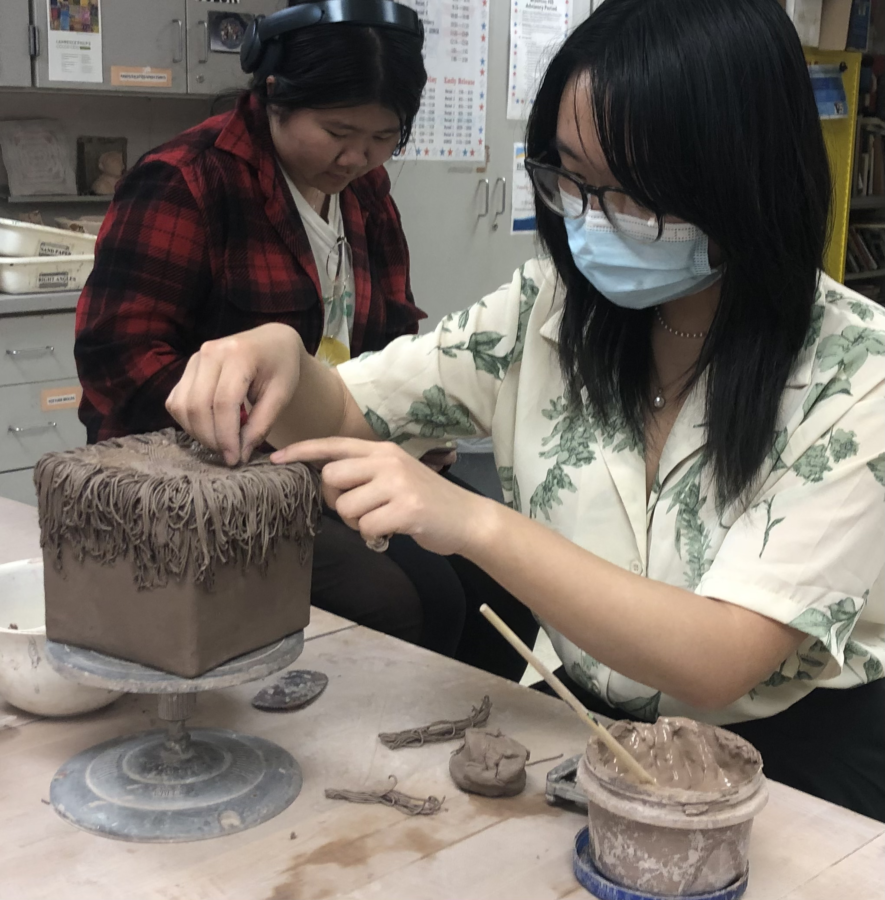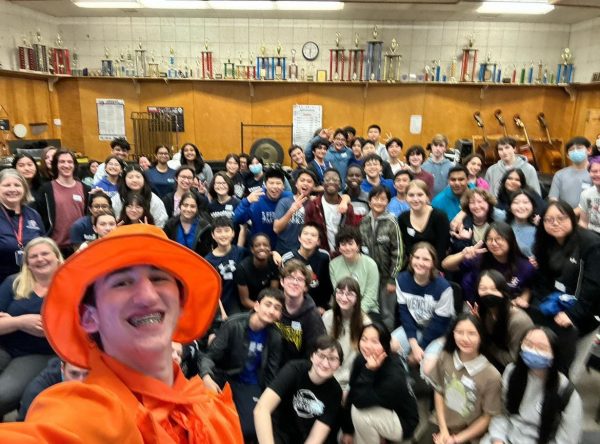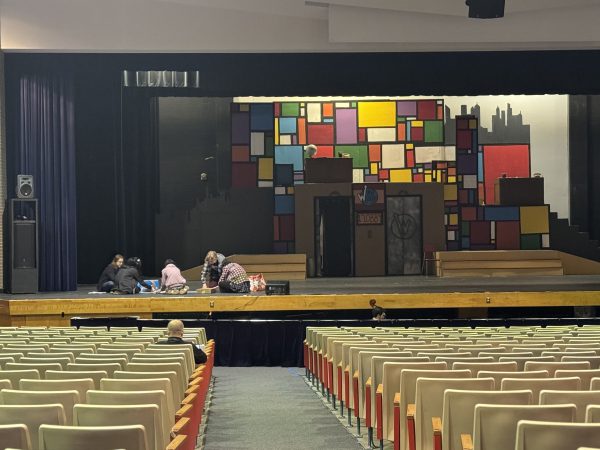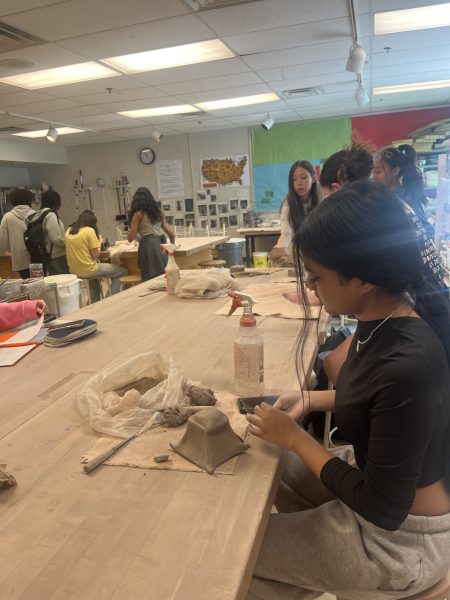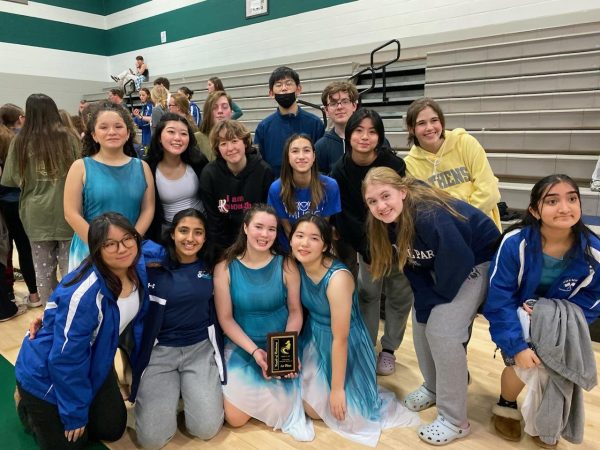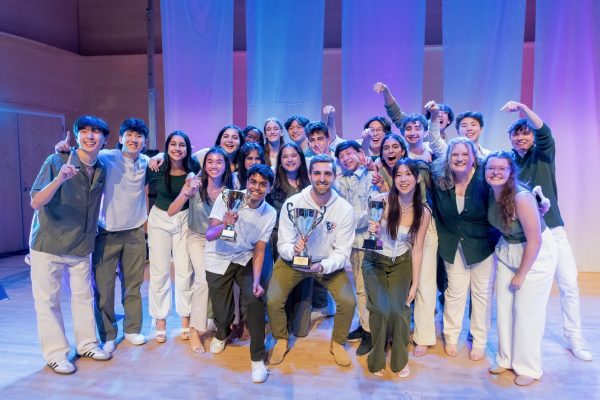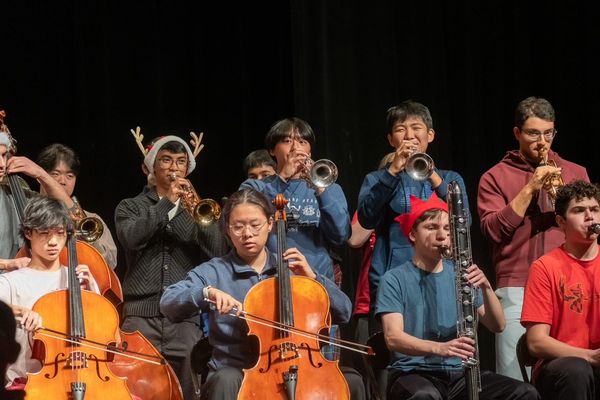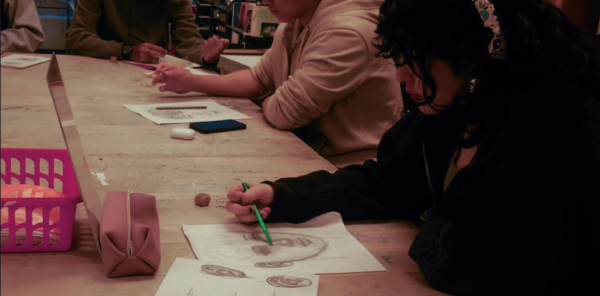Ceramics class teaches artistic expression through sculpting clay
Photo by Sara Denno
Sophomore Irina Wu works on a block of grass that she will later attach a fox sculpture to. Ceramics class teaches students to use clay and pottery as a medium of art. “I like that I get to use my hands for something other than typing and writing like I do in other classes,” Wu said.
Ceramics is one of the earliest forms of artistic expression. Art pieces are sculpted from clay, then are hardened in a kiln and glazed or decorated.
Ceramics is taught in this school as an art elective by art teacher Malinda Pierce, who has taught the art at various schools for a total of 25 years. At this school, two courses are offered: Ceramics 1 and Advanced Ceramics. “I think that ceramics is a less intimidating form of art because people who are afraid that they can’t draw well might be intimidated to go into a drawing or painting class,” Pierce said. “On the other hand, everyone has experience playing with mud or playdough, or with kneading dough while baking. Everyone has experience with that kind of tactile sensation.”
When a new project is introduced, Pierce gives a presentation or an overview of the assignment. For Ceramics 1, presentations are mainly focused on teaching technical skills, while for Advanced Ceramics, they are more focused on abstract concepts and explaining ways the students can use the clay to express themselves. “Art classes are unlike other classes in school, like math, because every student has a different answer to the problem or prompt,” Pierce said. “I can work with students so that they can judge themselves not based on what other people around them are doing, but based on where they are themselves.”
After the project is introduced, students work hands-on on their piece individually, with occasional one-on-one help from Pierce. Once the piece is sculpted, it is fired in a kiln to harden it, and is then glazed to give it color. It is fired a second time before getting graded, then is left on the shelves in the classroom until the student eventually takes it home.
Currently, the students of the Ceramics 1 class are working on crafting boxes that represent their “happy place.” Previously, they had worked on the “Head Bust” project, where they sculpted the face and shoulders of a character they created on their own. “I liked the head bust project in particular because we could use a reference for it, which made it easier for me to visualize my character,” sophomore Alara Erkan said.
Students of the advanced class, meanwhile, are learning to make ocarinas – wind musical instruments made of clay that originate from South American culture. “I like to make a connection between the assignments to art history or to other cultures,” Pierce said.
In the future, the advanced class will work on an assignment where they create a symbolic self-portrait that represents them on the inside. The base of the sculpture represents the person’s core or base, and an extra detail will be attached to the base that represents the person’s spark – what makes them fun.
According to both the teacher and her students, one advantage ceramics has over other forms of art is that it is a way of artistic expression that can be observed three-dimensionally. “I like art in general and expressing myself through art, but I chose ceramics because it is so hands-on and can make things that are three-dimensional,” sophomore Alisha Tomashevsky said.
“I think that I tend to see things and think things through in a visual way, and since ceramics are tangible and three-dimensional, I can interpret it in deeper ways,” Pierce said.
Your donation will support the student journalists of Thomas S. Wootton High School. Your contribution will allow us to purchase equipment and cover our annual website hosting costs.


